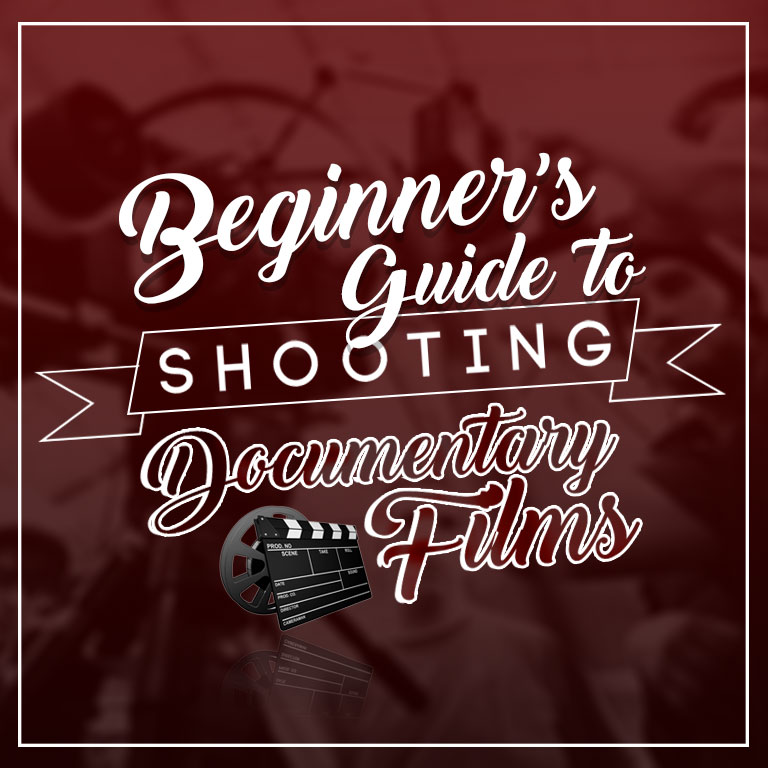
Documentary film can be the most accessible film genre for beginners and amateurs. It only needs an interesting topic and a great narrative to convey the topic. You can do away with special effects, CGI’s and hiring hundreds of crews for a documentary project. It requires less budget and less manpower that’s why it is a good start for shooting films.
A documentary film can be the most accessible genre for beginners and amateur filmmakers. With less budget and less manpower required, it is a good start for shooting films.
One can do away with special effects, CGI’s and hiring hundreds of crews in filming a documentary. Practically, it only needs an interesting topic and a great narrative to convey a story.
If you’re up for a documentary project there are important things that you should be wary about. In this article, we give you tips that cover the fundamentals of shooting documentary films.
The 5 Fundamentals of Shooting Documentary Films
1. Do Your Research
What’s good about a documentary is the spontaneity of story you can gather. However, note that it is an informed spontaneity: you cannot go to your location without knowing a good dose of what you should expect. That’s why it is crucial to do a preliminary research on your subject before shooting a film. This is one good tip that you always have to take in mind because research helps you:
- Find the best subject
- Formulate the right questions
- Be more at ease with your subject
- Earn the trust of your subject
- Avoid social mistakes that may offend the community/people
2. Create a Shots List
Even when documentary films seem spontaneous and offhand, it follows a script. In order not to miss a frame, you have to have a shot list. The list follows the pre-shoot script and basically serves as your guide in shooting the necessary scenes. It leaves behind stress & troubles as it enables you not to forget anything.
There is no prescribed template for this, but basically, it includes the essentials:
- Shot number
- Type of shot
- Duration
- Location
- Description
3. Gear Up with the Right Equipment
Some situations require specific equipment, and depending on your style you will need multiple cameras, filters, and other gears to achieve look you want for your film. Hence, you have to ascertain the right gears you need to get the best frames for your documentary. This, you could do when you prepare your shot list.
NOTE: If in need of camera equipment and gears, there are rental services available everywhere. But the best choice is professional grade video equipment such as those from Red Damien.
4. Be Wary of Audio
“Mediocre video quality can often pass if the sound is good. Horrible audio — no matter how good the visuals — is always horrible,” Richard Stupart wrote in Matador Network.
Your built-in recorder on your camera device offers not the best sound quality for your documentary. That’s why there are external microphones. The most useful are shotgun and lavalier microphones. Shotgun mic works well with close up interviews, while lav mic is what you need when your subject is too far or doing something. You can upgrade your audio recording devices with deadcat to reduce background and wind noise.
Your camera’s built-in recorder does not offer the best sound quality needed when you shoot film. External microphones work best for a documentary, particularly the shotgun and lavalier microphones.
Shotgun mic works well with close up interviews, while lav mic is what you need when your subject is at a distance. You can also upgrade your audio recording devices with deadcat that helps reduce background and wind noise.
5. Establish Rapport and Overcome Awkwardness.
When you get to your location, it is important to know how you should interact with the subject and how you should film them. Documentary films typically captures the rawness of life. What you want is to capture their lifestyle with authenticity. Hence a documentary can be disruptive to your subject’s day-to-day life.
Because filming a subject can be intrusive, you have to establish rapport beforehand. A documentary filmmaker can deal with the awkwardness of filming the mundane actions of the subjects e.g walking to work, greeting people, haggling with a vendor, walking around the neighborhood, partying etc.
To shoot film and capture the rawness of life, especially when shooting a documentary film, you need to establish rapport with the community. Capturing their lifestyle with authenticity can be disruptive to your subject’s day-to-day life. Make it a point to know to know how you should interact with the subject and how you can create your footage without creating awkwardness.
Rapport must be established beforehand to allow a documentary filmmaker to capture the mundane actions of the subjects (e.g walking to work, greeting people, haggling with a vendor, walking around the neighborhood, partying etc.) without a hint of discomfort or creating a feeling of intrusion.
To do this, it is helpful if you could stay with your subjects for days or weeks and explain to them your project to make them feel comfortable in the camera. Another important thing to remember: don’t ask them to do things you want to see in your documentary or insist on things they don’t normally do. What you could only ask are for shots about their trade, skills and whatever they normally do.
TIP: Immerse with your subjects for days or weeks and explain to them the project that you are filming. Another important thing to remember: Don’t ask them to do the things that you want to see in your documentary or insist on things they don’t normally do. What you could only ask from them are shots about their trade, skills and whatever they normally do.
Do you find this article helpful? Share us your thoughts by commenting below.





